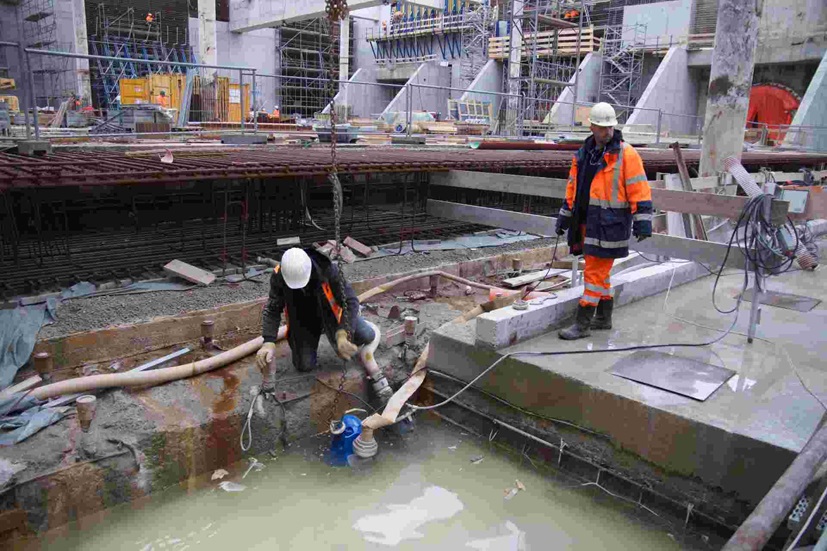Dewatering methods and techniques
There is a wide variety of methods used to control groundwater during an excavation. Selecting the right dewatering method is a critical step in almost any construction project. Every job and its conditions vary and therefore must be carefully assessed. Our customers benefit from the relentless testing of our equipment in every possible condition for over 140 years, enabling us to ensure you choose the most suitable and cost effective pump for the job.

The presence of undesired water in a construction site can lead to safety risks, increased costs and delays to your project. Therefore, when preparing to excavate the surface or to perform dry site construction work, it is critical to use the right technique to control, manage and remove water. This becomes even more
Dewatering is a term to describe the removal of groundwater or surface water from for example a construction site. In construction the water is pumped from wells or sumps to temporarily lower the groundwater levels, to allow excavation in dry and stable conditions below natural groundwater level.
There is a variety of pumps used for it: submersible pumps, self-priming pumps, borehole pumps, etc., but the pump choice always depends on the job conditions.
Construction dewatering methods refer to techniques such as wellpoints, deepwells, bypass and flood control. In wellpoint and deepwells submersible pumps are installed in a drilled well shaft, while in bypass and flood control pumps are placed in the area that needs to be dewatered. Let’s review these common techniques.
In Wellpoint, wells are drilled around the excavation area with submersible pumps installed in the well shaft. These pumps are connected to a header pipe allowing the groundwater to be drawn up by the pumps into the Wellpoints and then discharged.
In Deepwell, one or several individual wells are drilled, and submersible pumps are placed in each shaft. The Deepwell technique is best suited for deep excavations where large water volumes need to be discharged.
When sewer lines need maintenance, the sewage flow is pumped around the damaged pipe section using dewatering pumps. The pumps are installed upstream of the maintained pipe section. Bypass technique is also common in irrigation and construction projects.
Flood control refers to all methods used to reduce or prevent harmful effects of flooding from for example storm water and heavy rainfall. Be it construction, tunneling or mine work, site managers need to be prepared for potential site flooding, keeping pumps that can move high volumes of water against low head pressure nearby. The same applies to elevated water levels in channels, that could have a major impact on local communities when roads and houses get flooded. It is important that municipalities have good flood protection and are prepared to act quickly on these occasions.
Tunnel constructions are complex worksites where many variables need to be taken into consideration. Significant volumes of water from the construction site need to be removed in order to stabilize the ground or prevent flooding of the work area. Tunnel boring machines and drilling equipment require a reliable supply of cooling water, which must be recovered, extracted and treated after use. Tunneling projects require many dewatering pumps on site, ranging from small submersible pumps to very large units for large volume dewatering applications. For more detailed information, we recommend reading the article Keeping the water where you want it in tunnel construction
The presence of undesired water in a construction site can lead to safety risks, increased costs and delays to your project. Therefore, when preparing to excavate the surface or to perform dry site construction work, it is critical to use the right technique to control, manage and remove water. This becomes even more

Construction site managers need solid economic reasons for purchasing equipment. Our dewatering pumps are designed to meet their expectations, for whatever tough challenges in construction sites, tunnels and mines. The pumps need to be robust with low weight so that you easily can move a pump from one place to another on the back of a truck. There is no time for time-consuming installations, you just want to plug-and-pump.
The choice between drainage- or sludge pumps depends on the media you are going to pump; if there are solids in the water you would use a sludge pump but if you have light abrasives you choose a drainage pump. Should you also need to remove water from a very tight area, a center-line drainage pump is the best option.